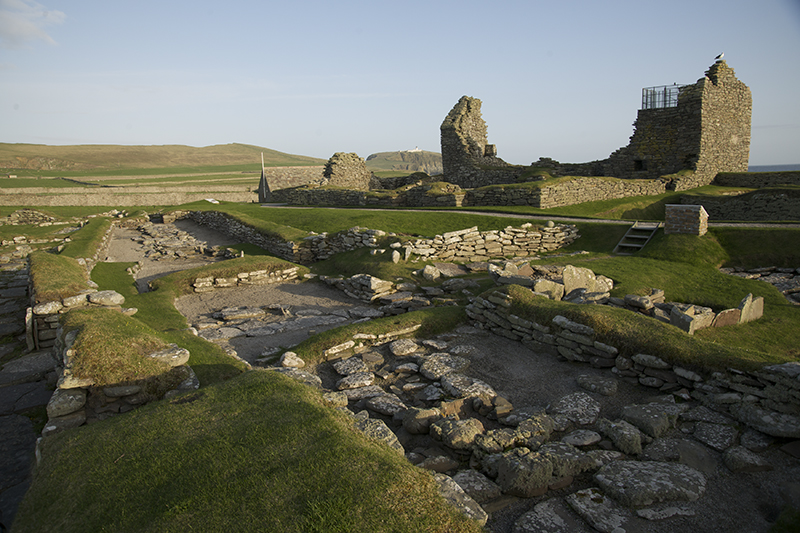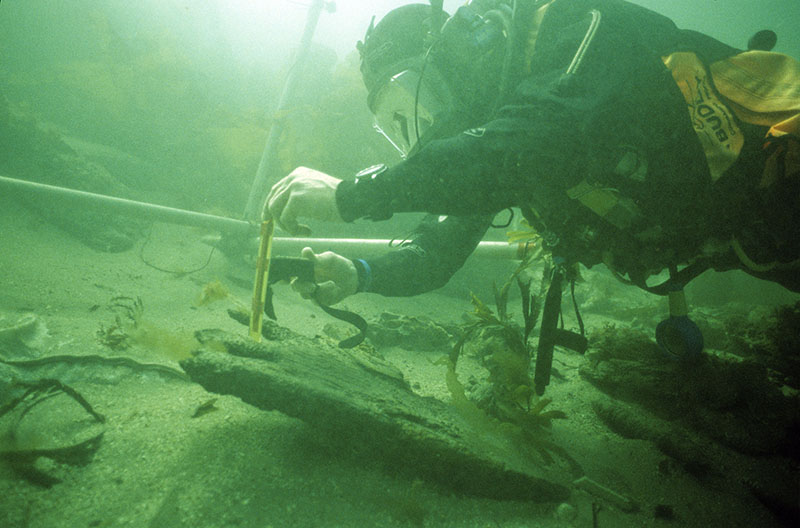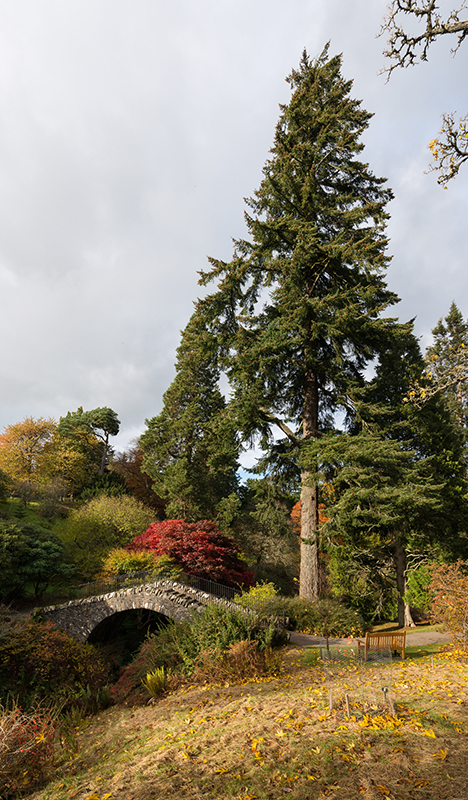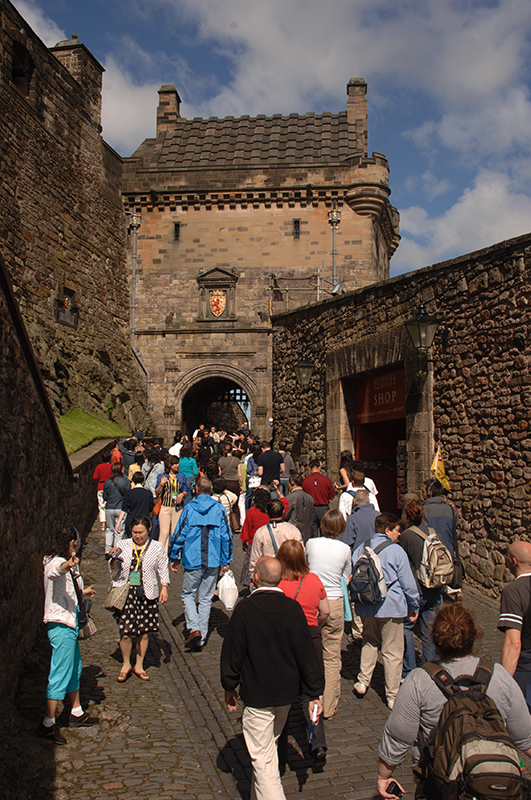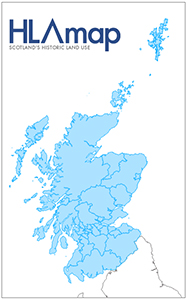The historic environment is the physical evidence for past human activity. It connects people with place, and with the traditions, stories, and memories associated with places and landscapes. (Our Past, Our Future 2023)
Key messages
YouTube: State of Scotland’s Environment report - historic environment
The historic environment belongs to all of us. It’s part of our everyday lives. It shapes our identity. It tells us about the past, the present – and even points the way to the future.
But what is the historic environment? We see it as everything that has been created by people over time: the tangible and the intangible. It can be a place, an object or an idea. It can be a castle, a ruined abbey or a stone circle; a high street, a colliery or a garden; a book, an instrument – even a song or a piece of music. It’s all those things that we’ve made, all the way up to today. The historic environment is Scotland’s story’, it attracts millions of visitors every year and generates income and jobs.
Historic Environment Scotland published a new strategy in 2023 that sets out a national mission to sustain and enhance the benefits of Scotland’s historic environment, for people and communities now and into the future.
Find Historic Environment Scotland's strategy here: Our Past, Our future
Historic environment in numbers
- 86% of Scottish people say it is important that Scotland’s heritage is well looked after, but only 69% think that the heritage of their local area is well cared for.
- Traditional buildings are estimated to make up:
- 19% of Scotland’s housing stock;
- 33% of Scotland’s retail space;
- 24% of office space; and
- 41% of the spaces used by the public sector.
- Only 15% of investment in Scotland’s historic environment comes from the heritage sector. 60% is spent by homeowners or the private sector, and 25% by the public and third sectors.
- Around £1.2bn is spent each year on the repair further adaptation or mitigation measures.
- At 52.9%, Scotland has the highest proportion of pre-1946 housing stock in Europe, compared to 37.8% for the UK and 22.3% across the EU.
- Over 18 million people visited heritage attractions in 2019, with half of all international visitors reporting heritage as the key motivation for visiting Scotland. Visitors who included a heritage attraction as part of their trip spent over £3.2 billion in 2019. This contribution is comparable to the turnover of Scotland’s shipbuilding (£1bn) and aerospace (£2.2 bn) industries combined, or to life sciences (£3.1bn), digital industries (£3.2bn), or visual and performing arts (£3.8bn)
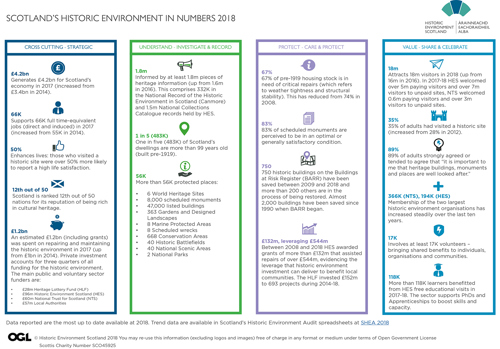
Source: Scotland's Historic Environment Audit 2018 (SHEA 2018). The figures in the infographic above are from 2018. A new audit is due in 2023 - 2024 and the figures will be updated then.
Download the full PDF SHEA 2018 Summary Infographic (Updated figures will be available in 2023 - 2024).
Some parts of Scotland’s historic environment are protected through the process of ‘designation’ - identifying the most important parts of the built environment to recognise their significance and enhance their protection. In 2022 Scotland’s historic environment is supported by more than 56,000 designations:
- 6 world heritage sites
- 46794 listed buildings
- 8,061 scheduled monuments
- 672 conservation areas
- 365 designed gardens and landscapes
- 8 Historic Marine Protected Areas
- 8 scheduled wrecks
- 40 nationally important battlefields.
- 43 national nature reserves
- 2 national parks
- 2 biosphere reserves
2018 report: Scotland's Historic Environment Audit (SHEA 2108)
We’ve published the SHEA data for anyone to undertake their own analysis and interpretation of the state of the sector. The latest published SHEA is 2018. Updated data will be published alongside the new Historic Environment Strategy for Scotland in 2023.
Download the full PDF SHEA 2018 Summary Infographic
Download the SHEA 2018 data (xlsx)
SHEA case studies are available from the Built Environment Forum Scotland (BEFS).
Blog: Heritage Healthcheck: Five trends of the sector 2018
More information about the designations that protect Scotland’s historic environment are on Historic Environment Scotland’s website.
YouTube: Promoting the value of Scotland’s historic environment
World heritage site - The Heart of Neolithic Orkney
Scheduled monument - Jarlshof, Shetland
Historic marine protected area - Contour survey of the Duart Point, Mull
Garden and designed landscape - Dawyck Botanic Garden, Scottish Borders
Scotland has two National Parks and 40 National Scenic Areas. These contain many important features of the historic environment.
CANMORE contains more than 330,000 records and 1.5 million catalogue entries for archaeological sites, buildings, industry and maritime heritage across Scotland.
Pressures affecting the historic environment
Climate Change
A key challenge which continues to face the historic environment across the UK is deterioration of high-level masonry at historic sites because of climate change and other factors. Addressing these challenges and understanding and mitigating the impacts on surrounding communities, sharing our learning, and benefitting from the experience of others will continue to be a key priority.
Our understanding of how the climate is, and has been, changing has advanced considerably in recent years.
Scotland’s climate is changing, temperatures have increased by 0.3°C since 1981, and our summers are on average 11% wetter, and winters 5% wetter.
Many of these trends are set to continue, with our winters becoming increasingly wetter and warmer, and our summers becoming hotter and drier, with more short, intense periods of rainfall.
YouTube: Climate Change Impacts on the Historic Environment
The historic environment’s response to climate change can be articulated under three themes, as defined in the Climate Change Act (Scotland) 2009:
Mitigation – with one in five of Scotland’s housing stock considered to be traditional (built pre-1919), the historic environment has an increasingly important role to play in helping Scotland meet ambitious climate change targets, particularly around reducing energy usage and carbon emissions. Historic Environment Scotland has published a number of Short Guides and Refurbishment Case Studies that demonstrate how traditional buildings can be made more energy efficient.
Adaptation – many aspects of the historic environment are inherently resilient to the impacts of climate change, or can be addressed through regular maintenance and upkeep of historic assets. There may be occasions where slight modifications are needed, particularly in the case of traditional buildings, where they need to be adapted to increase their resilience against the anticipated changes, particularly increased winter rainfall. Historic Environment Scotland has published a Short Guide on Climate Change Adaptation in the Historic Environment that provides examples of the types of modifications that could be made.
YouTube: Adapting to Climate Change in Scotland
Sustainability – the ongoing use and reuse of existing historic assets is inherently sustainable and has low environmental impact, when compared to the construction of new buildings. Associated directly with this, the use of traditional materials and skills in the repair and maintenance of historic assets can have wider social and economic benefits, through means such as creating skilled jobs and through the protection and enhancement of our historic environment. A healthy, resilient historic environment contributes extensively to Scotland’s economy by attracting millions of visitors each year. Whilst this has positive social and economic benefits, increased visitation can have a detrimental impact on certain elements of the historic environment through ‘wear and tear’. A balance needs to be struck that allows the historic environment to continue to make a positive contribution to Scotland’s society and economy, but without comprising the preservation and conservation of the historic environment.
Sea Level Rise and Coastal Change - Rising sea levels mean that coastal erosion is an increasing threat to heritage assets. Scottish tidal records show that over the past 20 years relative sea-levels around Scotland have been increasing on average by 3 mm/yr. This is faster than the 20th century average for the British Isles, which is 1.4 mm/yr. A recent study, Dynamic Coast: Scotland’s Coastal Change Assessment, has shown that since the 1970s erosion rate on Scotland’s soft coast (19% of the total) has nearly doubled to 1.0 m/yr, in comparison to rates measured between the 1890s and 1970s. In the same time period there has been a 39% increase in the amount of soft coast experiencing erosion and a 22% decrease in the amount of soft coast accreting. Further information about the impact of coastal erosion on Scotland’s heritage is available from The SCAPE Trust.
YouTube: Learning from Loss - Reflecting on Eroding Coastal Archaeology
YouTube: Brora dig
The Brora Saltpans project to rescue an important piece of Brora’s History in danger of being destroyed by coastal erosion.
Development pressures. These can result in loss of sites and loss of significance. Most development affecting heritage sites is controlled through the planning system and harm can be avoided and mitigated.
Maintenance, As buildings get older, they may require different levels of maintenance. Poorly executed repairs can damage heritage value. The shortage of traditional skills, suitably qualified craftspeople and locally-available materials is an additional pressure on maintaining and repairing the historic environment.
Pollution - Although levels of pollutants have fallen over recent decades, their effects continue to cause damage, particularly to materials such as sandstone, resulting in these materials being vulnerable to ongoing decay.
Visitors - Tourism, leisure and sport can improve understanding and enjoyment of the historic environment. However, increased visitor numbers can also lead to pressures e.g. visitors can cause damage to heritage sites by wearing down the footpaths across sensitive features, or by lighting fires.
Visitors at Edinburgh Castle, HES
Data
Scotland’s Historic Environment Audit (SHEA)
An assessment of our historic environment - The Scotland’s Historic Environment Audit (SHEA) reports show in facts and figures that Scotland’s historic environment is a unique asset that attracts millions of visitors each year and generates income and jobs across Scotland. They provide statistics on Scotland’s heritage assets and give details on how these are changing over time.
Reports (published in 2007, 2008, 2010, 2012, 2014, 2016 and 2018) bring together in one place research and data of real practical use to all those involved in managing the historic environment. Updated data will be published in 2023.
Our Place in Time Annual Reporting
Evaluation of OPiT showed that it performed a useful role for many people and organisations. But with Scotland impacted by a growing series of challenges, its right that we look to establish clearer strategic priorities to help us navigate this new environment. Find out more about the OPiT report. OPiT annual report 2021.
Measuring success
Thirteen key performance indicators (KPIs) are used to measure the success of delivering Our Place in Time.
Resources to explore the historic environment
The Historic Environment Scotland Portal allows you to search, browse and view decisions and designation records, download spatial datasets or use the map search.
Canmore
Canmore is the online catalogue to Scotland's archaeology, buildings. industrial and maritime heritage. Welcome to Canmore.
HLAmap – Historic Land-Use Assessment Map
HLAmap is a Scotland-wide view of land use in modern and past times.
It uses simple annotated maps to show how the landscape has changed over time, giving the user a tool to decipher the broad elements of the historic environment.
Case studies provide easy-to-follow steps to help users get the most from HLAmap.
Locate details of archaeological and historic sites held in Scotland’s national and local historic environment records.
Past Map
The Past Map allows you to locate details of archaeological and historic sites held in Scotland’s national and local historic environment records.
What are we doing about it?
Historic Environment Scotland’s Corporate Plan 2022 - 2025 – Historic Environment Scotland publishes new corporate plan. Heritage for All aims to bring real benefits for the people of Scotland and beyond. Our plans are just one part of a much bigger ambitions to build a more successful Scotland. The Scottish Government’s National Performance Framework aims to make Scotland “the best possible place to live, work, grow up and study in”. National Performance Framework.
The historic environment can make a strong contribution to a green recovery and a fairer, more sustainable economy through promoting the benefits of traditional forms of construction.
In 2022 the Scottish Government published a Wellbeing Economy Monitor that brings together a range of indicators to provide a baseline for assessing progress towards the development of a wellbeing economy in Scotland.
The historic environment makes a valuable contribution to wellbeing
Promoting Collective stewardship - Historic Environment Scotland works in partnership with a wide range of communities, individuals and organisations to create new opportunities of the historic environment and to address the pressures and challenges. All this work is informed by Scotland’s first ever strategy for the Historic Environment, Our Place in Time, alongside Scottish Government strategies for the Economy, Culture and Employment. To ensure the historic environment is looked after, protected and aged for generations to come. As lead body, Historic Environment Scotland encourages everyone to work together to drive support and innovation in caring for our heritage – developing and sharing knowledge, resources, skills and expertise of all who work with or depend on the historic environment – putting into practice what we have learned from others.
Community Empowerment - Empowering and harnessing the efforts of local communities and communities of interest.
Scotland's Coastal Heritage at Risk project (SCHARP) trains and supports volunteers to collect valuable data about vulnerable coastal heritage sites to provide an up-to-date picture of Scotland's coastal heritage and identify sites for further action.
Historic Land-Use Assessment (HLA) is an ongoing project designed to map past and present land use across Scotland to help us understand how today's landscape has been influenced by human activities in the past.
The development-planning process helps to manage change in the historic environment. A local authority may impose a condition on a development to protect the historic environment and, in rare instances, may refuse a planning application. Specific procedures in place for protecting the historic environment include:
In addition, Historic Environment Scotland publishes guidance on managing change in the historic environment for planning authorities and other interested parties, including owners.
Environmental impact assessments require the consideration of the effects of a project on the historic environment and the application of mitigation measures – find out more on Historic Environment Scotland website
Climate change is damaging Scotland’s historic environment. Historic Environment Scotland’s Climate Change Risk Assessment details the results of an initial assessment to understand what the current climate risks are to their 336 Properties in Care. Their new Climate Change and Environmental Action Plan 2019 to 2024, will be used to engage with those throughout the wider historic environment, and to support the transformational change that will be necessary if society is to adapt to, and mitigate the causes of, climate change. The UK Climate Change Risk Assessment 2017 and the first Scottish Climate Change Adaption Programme (SCCAP) are two examples of comprehensive studies that have significantly raised awareness of the potential risks, impacts and adaptations actions that can be taken to protect valuable assets. The Second SCCAP, published in 2019, continues Scotland’s proactive trajectory to address, and adapt to, climate change.
YouTube: Historic Environment Scotland's Climate Change Risk Assessment
Grants and funding are available to projects that aim to protect and promote Scotland’s historic environment – find out more from Historic Environment Scotland.
The Architectural Heritage Fund offer a Heritage Impact Fund.
Traditional building – Investment is also being used to support, develop and promote Scotland's traditional building skills and the use of traditional building materials. Historic Environment Scotland has helped to develop new specialist vocational qualifications and launched the Traditional Building Health Check scheme in partnership with CITB - Construction Skills Scotland. This will introduce independent inspections to identify issues with traditional buildings, which will benefit the repair and maintenance market through using appropriately skilled and qualified contractors.
Policy and legislation
Our Place in Time (2014), is the first Historic Environment strategy for Scotland, setting out a vision, definition and desired outcomes for our rich historic environment. It provides a framework within which organisations can work together to achieve these positive outcomes. The progress being made by the sector in delivering OPiT is described in the Our Place in Time annual reports.
The Historic Environment Policy for Scotland (2019) is a policy for the historic environment in Scotland. This replaces the Historic Environment Scotland Policy Statement (2016).
HEPS is our first strategic policy document with a focus on the whole of the historic environment. It clearly links our policy principles with wider national outcomes to provide a relevant context and better understanding across the board of how important the historic environment is. Further policy context and guidance is available.
Legal measures for protecting the historic environment have been in place for many years and are routinely used by planning authorities to control local development. Recent improvements have been made to the law to make it easier for a wider range of people and organisations to manage the historic environment. For example, the Historic Environment (Amendment) (Scotland) Act 2011 tackles some long-standing practical issues and makes it easier for owners, tenants, businesses, the voluntary sector and the regulatory authorities to manage and care for the historic environment.
The Historic Environment Scotland Act 2014 established Historic Environment Scotland. It defines Historic Environment Scotland functions in statute and aims to create a more resilient, sustainable and effective heritage service for the nation, simplifying the public sector landscape and creating a higher profile lead body for the historic environment in Scotland.
Find out more about legislation and guidance on Historic Environment Scotland.
Historic Environment Scotland's - Heritage for All - Our Corporate Plan 2022 - 2025 sets out the vision and direction of the lead public body for the historic environment.
The delivery of the corporate plan is supported by the Annual Operating Plan 2022 - 2023.
This page was updated on 07 Nov 2023
Adobe Acrobat Reader is the free, trusted leader for reliably viewing, annotating and signing PDFs.
Download Adobe Acrobat Reader


